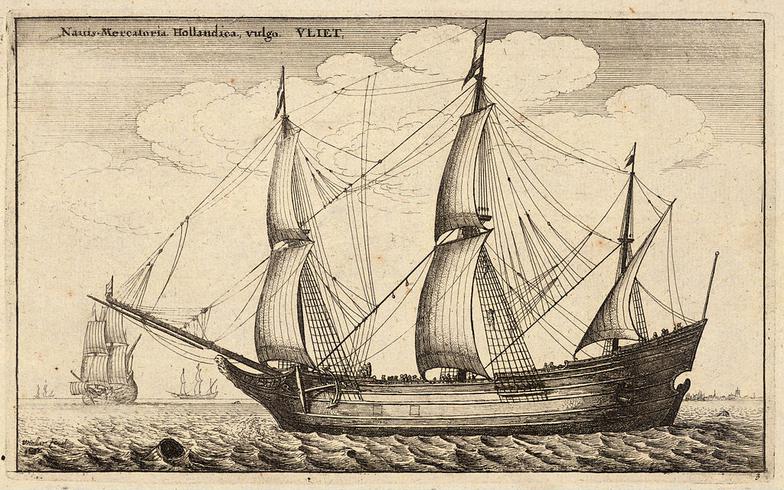The Fulkerson Family Pages
Travels of Jan Vigne
Jan sailed back to Holland in August 1647 with 106 others on board the "Princess Amalia." They took a wrong turn after crossing the Atlantic and were shipwrecked on the coast of Wales on 27 September 1647. Only Jan and 20 others survived the accident. However, some letters (from Stuyvesant?) required to verify the bills went down with the ship. He made it back to the Netherlands not long afterward. A subsequent ship brought new letters to verify the bills. On 23 December 1647 he signed a note giving power of attorney to Isaac Coster concerning his accounts with the West India Company.
Jan's stay in Holland was not a financial success. About five years after his marriage the house on Oude Gracht was heavily mortgaged and had to be sold.
By that time, though, Emmerentje's youngest daughter Gysbertgen had grown and married, which cleared the way for Jan's return to North America. Jan, Emmerentje, her older daughter Aeltgen and two-year-old Gosen were in Manhattan by 1651. Daughter Aeltgen was married there on 31 December 1651. When he reached adulthood, Gosen voyaged back to Europe, possibly in search of a wife. Records show Gosen did return to New Netherland, but there is no indication he ever married, so there are no known Vigne descendants.
This drawing of the Wenceslas Hollar is an exemplar of a Dutch fluyt. A vessel originally designed by the shipwrights of Hoorn in the 16th century to transport cargo. Not meant to convert to a warship, it had a lower cost and could carry a sizeable load, while still able to be manned by a smaller crew. Construction by specialized shipyards using new tools made it half the cost of rival ships. It gave Dutch merchants a competitive advantage contributing to the rise of the Dutch seaborne empire. In 1670 the Dutch merchant marine carried 568,000 tons of freight, about half the European total of the time.

